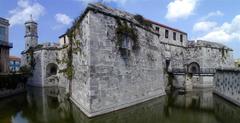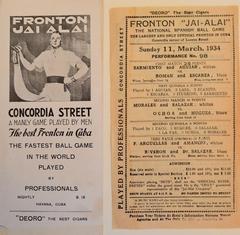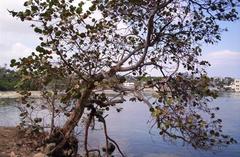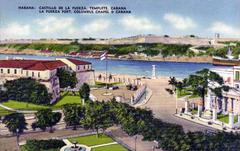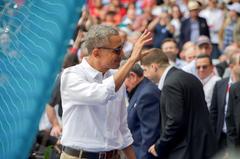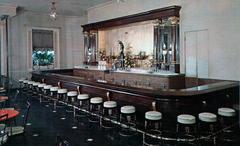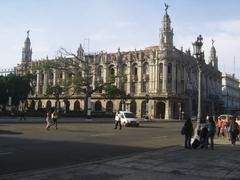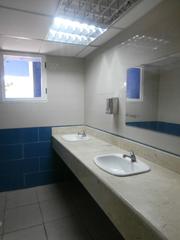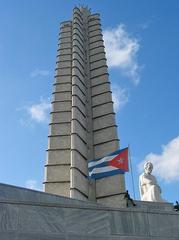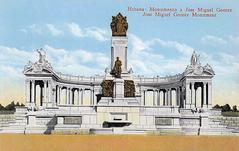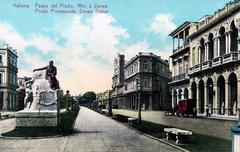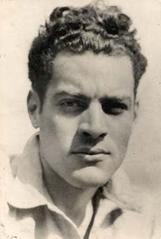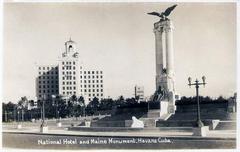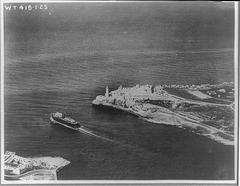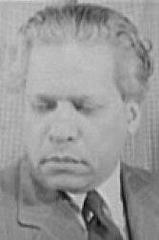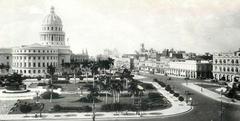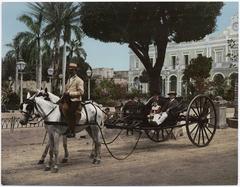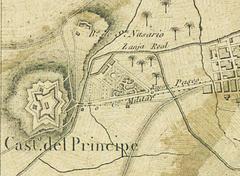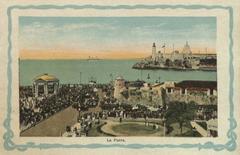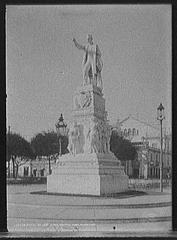
Museum of Decorative Arts Havana: Visiting Hours, Tickets, and Attractions Guide
Date: 04/07/2025
Introduction: History and Cultural Significance
The Museum of Decorative Arts in Havana (Museo de Artes Decorativas) is one of Cuba’s most distinguished cultural landmarks. Housed in a stunning early 20th-century mansion in Havana’s Vedado district, the museum offers a unique glimpse into the island’s aristocratic past and its rich heritage in decorative arts. Originally built for María Luisa Gómez-Mena, Countess of Revilla de Camargo, the mansion was completed in 1927 at the height of Havana’s golden age. Following the Cuban Revolution, it was transformed from a private residence to a public museum in 1964, opening its doors to showcase more than 33,000 objects—including European and Asian furniture, porcelain, textiles, and rare decorative works (Bucket List Travels, Trip Cuba, Cuban Travel Agency).
The museum’s neoclassical façade and interiors incorporate French Regency and Art Deco styles, blending cosmopolitan influences with Cuban motifs. Its grand salons, crystal chandeliers, and intricate porcelain collections evoke the luxury and lifestyle of Cuba’s pre-revolutionary elite, making it a must-visit for anyone seeking to explore Havana beyond its colonial heart.
Table of Contents
- Introduction
- Historical Background
- Architectural Significance
- Collection Highlights
- Visiting Hours and Ticket Information
- Visitor Experience and Special Events
- FAQs
- Practical Visiting Tips
- Visual Resources
- Conclusion and Call to Action
- References
Historical Background
The museum’s origins are closely tied to Cuba’s sugar aristocracy and the cosmopolitan culture of early 20th-century Havana. The mansion was commissioned by María Luisa Gómez-Mena, whose family’s wealth stemmed from the sugar industry. Designed by French architects P. Virad and M. Destuque, the residence was intended to rival the grandest homes in Europe and the Americas (Bucket List Travels). After the 1959 Revolution, the Cuban government nationalized the property, converting it into a museum in 1964 to safeguard and democratize access to this cultural legacy (RentalCarCuba).
Architectural Significance
Regency and Eclectic Influences
The building exemplifies early 20th-century eclecticism, with a pronounced French Regency influence. Its façade features classical symmetry, ornate stonework, and wrought-iron balconies. Imported Italian marble, intricate woodwork, and gilded moldings further highlight its aristocratic aspirations (Bucket List Travels).
Art Deco and Local Design Elements
Constructed during Havana’s Art Deco boom, the mansion incorporates geometric motifs and luxurious materials characteristic of the era, subtly interwoven with Cuban tropical and African iconography (CNN Travel). This fusion creates a unique Cuban interpretation of international design trends.
Layout and Preservation
Organized around a central courtyard, the mansion follows traditional Spanish colonial and European aristocratic design, maximizing light and ventilation. The main floor houses formal reception rooms, while upper levels contain private quarters and galleries. Preservation efforts since the 1960s have focused on maintaining the mansion’s authenticity and conserving its original furnishings and art (CNN Travel).
Collection Highlights
The museum’s collection is among the Caribbean’s finest, encompassing decorative arts from the 16th to the 20th centuries:
- French and English Furniture: Includes Louis XV, Louis XVI, Regency, and Empire pieces.
- Porcelain and Ceramics: Features Sèvres, Meissen, Limoges, and Asian export porcelain.
- Glassware: Tiffany glass and Venetian crystal.
- Textiles and Tapestries: Handwoven French and Flemish works.
- Sculpture and Decorative Objects: Bronze statuettes, ormolu clocks, and European silverware.
Rooms are curated to reflect the mansion’s original ambiance, with objects arranged as they would have been during its heyday (RentalCarCuba).
Visiting Hours and Ticket Information
- Location: Calle 17, No. 502, between E and D, Vedado, Havana.
- Opening Hours: Most commonly, Tuesday to Sunday, 9:00 AM to 5:00 PM. Some sources note slightly different hours; it’s advised to confirm before visiting.
- Closed: Mondays and some public holidays.
- Admission: 20–200 Cuban pesos (CUP) as of 2025, typically about $8 USD. Discounted rates available for students and seniors. Payment is in local currency at the entrance (Cuban Travel Agency).
- Guided Tours: Offered in Spanish and occasionally English, for a small additional fee.
- Contact: (+53) 7 8309848
Visitor Experience and Special Events
The museum regularly hosts concerts, lectures, educational workshops, and temporary exhibitions, fostering connections between Cuba’s artistic heritage and contemporary culture. Popular photography spots include the central courtyard and lavish period rooms (WhichMuseum).
FAQs
Q: What are the museum’s visiting hours?
A: Generally, Tuesday to Sunday, 9:00 AM to 5:00 PM; closed Mondays and public holidays.
Q: How much is admission?
A: Tickets cost 20–200 CUP (about $8 USD in 2025), with discounts for students and seniors.
Q: Are guided tours available?
A: Yes, in Spanish and sometimes English. Reserve in advance if possible.
Q: Is the museum wheelchair accessible?
A: Accessibility is limited, especially to upper floors, due to the historic building’s layout.
Q: Can I take photographs?
A: Non-flash photography is usually allowed, with restrictions in some galleries.
Practical Tips for Visitors
- Plan for 1–2 hours to explore the collections and enjoy the mansion’s architecture.
- Arrive early to avoid crowds, especially during peak tourist seasons.
- Language: Most labels are in Spanish; guided tours or translation apps are helpful.
- Dress comfortably and wear appropriate footwear for walking and stairs.
- Check for special exhibitions or events in advance.
- Facilities: Restrooms available; no on-site café.
- Children: Family-friendly, with cultural activities and workshops.
Visual Resources
Explore the museum’s official brochures and virtual tours online. Look for high-quality images showcasing the mansion’s neoclassical façade, ornate period rooms, and porcelain collections. Use search terms like “Museum of Decorative Arts Havana visiting hours” for the latest visuals.
Conclusion and Call to Action
The Museum of Decorative Arts stands out as a window into Cuba’s aristocratic past and international artistic influences. Its exceptional collections, elegant architecture, and tranquil setting in Vedado make it a highlight for art lovers and cultural explorers alike. For an optimal experience, check visiting hours, consider a guided tour, and explore the surrounding district’s cultural offerings.
Plan your visit today! Download the Audiala app for updates on hours, ticket prices, and guided tours. Enhance your itinerary with additional resources on Havana’s historical sites, and follow us for news on cultural events and exhibitions.


